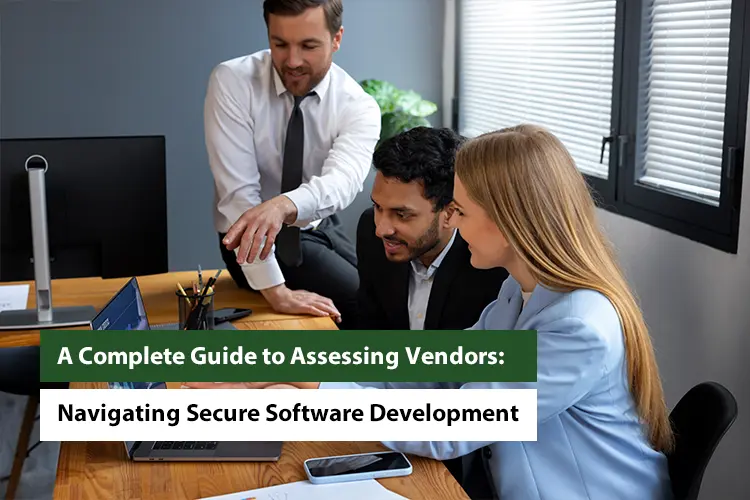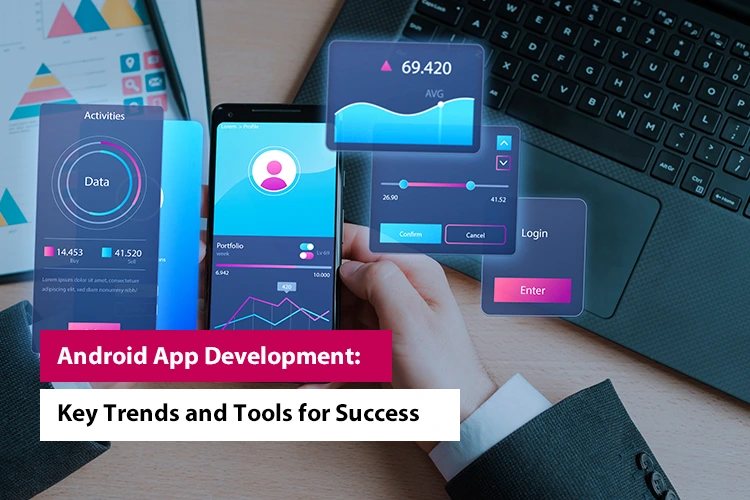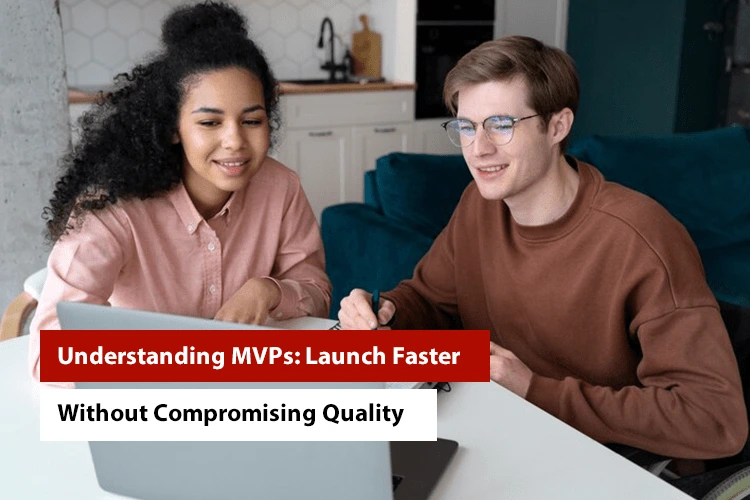A Complete Guide to Assessing Vendors: Navigating Secure Software Development

In an era where technology permeates every aspect of our lives, from the way we communicate and work to how we shop and bank, the importance of secure software development solutions cannot be overstated. Picture this: every minute, 244 new cyber threats emerge globally, putting businesses and individuals alike at risk of data breaches, identity theft, and financial loss. With such staggering statistics, it begs the question: How can organizations navigate the complex landscape of software development while ensuring the security of their systems and data?
Imagine entrusting your sensitive information to a software solution only to find out that it’s vulnerable to cyber attacks. According to a recent study, data breaches cost organizations an average of $3.86 million per incident. These numbers underscore the critical need for robust security measures throughout the software development lifecycle. But how can businesses discern which vendors prioritize security in their development processes? And what steps can they take to ensure that the software they deploy is not just functional but also secure?
In this comprehensive guide, we embark on a journey to unravel the intricacies of assessing vendors for secure software development. We’ll delve into the key factors to consider, ranging from security expertise and compliance with regulatory requirements to data protection measures and incident response protocols. Through a systematic approach to vendor assessment, organizations can mitigate risks, safeguard sensitive data, and build a foundation of trust with their stakeholders.
Join us as we explore the nuances of secure software development and empower organizations to make informed decisions that prioritize security in an increasingly interconnected world. Together, let’s navigate the complexities of software development and pave the way for a safer, more secure digital future.
Understanding the Importance of Secure Software Development

-
Protecting Sensitive Data
Secure software development is paramount for protecting sensitive data from unauthorized access, theft, or manipulation. In today’s digital landscape, where vast amounts of data are generated and processed daily, ensuring the confidentiality, integrity, and availability of data is critical. Whether it’s personal information, financial data, or proprietary business information, unauthorized access to sensitive data can have severe consequences, including financial loss, legal liabilities, and damage to reputation. By implementing robust security measures throughout the software development lifecycle, organizations can mitigate the risk of data breaches and safeguard sensitive information from malicious actors.
-
Mitigating Cybersecurity Threats
Cybersecurity threats continue to evolve in sophistication and complexity, posing significant risks to organizations of all sizes and across all industries. From malware and ransomware attacks to phishing scams and social engineering tactics, cybercriminals employ a variety of techniques to exploit vulnerabilities in software systems. Secure software development helps mitigate cybersecurity threats by identifying and addressing security vulnerabilities early in the development process. By integrating security best practices, such as secure coding standards, vulnerability assessments, and penetration testing, organizations can reduce the attack surface and strengthen their defenses against cyber threats.
-
Ensuring Regulatory Compliance
In today’s regulatory landscape, organizations must comply with a myriad of laws, regulations, and industry standards governing data protection and privacy. Non-compliance can result in hefty fines, legal penalties, and reputational damage. Secure software development plays a crucial role in ensuring regulatory compliance by incorporating security controls and measures that align with applicable regulations, such as GDPR, HIPAA, PCI DSS, and SOX. By implementing security controls, such as access controls, encryption, and audit trails, organizations can demonstrate their commitment to protecting sensitive data and meeting regulatory requirements.
-
Preserving Trust and Reputation
Trust is a cornerstone of any successful business relationship, and maintaining the trust of customers, partners, and stakeholders is essential for long-term success. A single security incident or data breach can erode trust and damage reputation irreparably. Secure software development helps preserve trust and reputation by ensuring the confidentiality, integrity, and availability of data and protecting against security breaches. By investing in secure software development practices, organizations can demonstrate their commitment to protecting sensitive information and maintaining the trust and confidence of their stakeholders.
-
Reducing Costs and Liabilities
The costs associated with security breaches and data breaches can be staggering, encompassing direct costs such as legal fees, regulatory fines, and remediation expenses, as well as indirect costs such as loss of revenue, damage to reputation, and customer churn. Secure software development helps reduce costs and liabilities by proactively identifying and addressing security vulnerabilities before they can be exploited by malicious actors. By investing in security early in the development process, organizations can avoid costly security incidents and minimize the impact on their bottom line.
-
Enabling Innovation and Growth
Secure software development is not just about mitigating risks; it’s also about enabling innovation and growth. By establishing a strong foundation of security, organizations can create a secure environment that fosters innovation and allows them to explore new opportunities without compromising on security. Secure software development enables organizations to deploy new features and functionalities with confidence, knowing that security considerations have been addressed proactively. By integrating security into the development process, organizations can accelerate time-to-market, improve customer satisfaction, and drive business growth.
Key Factors to Consider When Assessing Vendors

-
Security Expertise and Experience
When evaluating vendors for secure software development, it’s crucial to assess their security expertise and experience. Look for evidence of specialized security certifications and accreditations, such as ISO 27001 or SOC 2 compliance, which demonstrate a commitment to maintaining robust security practices. Additionally, inquire about the vendor’s experience in developing secure software solutions, including their track record of successfully mitigating security risks and addressing vulnerabilities. Consider factors such as the depth of their security knowledge, the qualifications of their security team, and their experience in your industry or domain.
-
Compliance and Regulatory Requirements
Ensure that the vendor complies with relevant industry regulations and standards that govern secure software development. Depending on your industry and geographical location, this may include regulations such as GDPR (General Data Protection Regulation), HIPAA (Health Insurance Portability and Accountability Act), or PCI DSS (Payment Card Industry Data Security Standard). Request documentation or reports that demonstrate the vendor’s compliance efforts and adherence to security standards. A proactive approach to regulatory compliance signals a commitment to protecting sensitive data and maintaining the trust of customers and stakeholders.
-
Security Protocols and Practices
Delve into the vendor’s security protocols and practices to assess their approach to mitigating security risks throughout the software development lifecycle. Inquire about their methods for threat modeling, secure coding practices, code review processes, and vulnerability assessments. A comprehensive security framework should encompass measures such as encryption, authentication mechanisms, access controls, and regular security audits. Additionally, seek information about the vendor’s incident response procedures and their ability to detect, respond to, and recover from security incidents in a timely and effective manner.
-
Data Protection Measures
Data security is paramount, particularly when developing software solutions that handle sensitive or personal information. Evaluate how the vendor protects data throughout its lifecycle, including storage, transmission, and processing. Look for encryption technologies, data anonymization techniques, and robust access controls to safeguard sensitive data from unauthorized access or disclosure. Additionally, assess the vendor’s data retention and disposal practices to ensure compliance with relevant data protection regulations and minimize the risk of data breaches or unauthorized data access.
-
Secure Development Lifecycle (SDLC)
A well-defined Secure Development Lifecycle (SDLC) is essential for integrating security into every phase of the software development process. Inquire about the vendor’s SDLC methodology and how they incorporate security best practices from the initial design stage through to deployment and maintenance. Look for evidence of security training provided to offshore software developers and quality assurance professionals to ensure they are equipped with the necessary skills to identify and address security vulnerabilities proactively. A structured SDLC helps to minimize security risks, reduce the likelihood of security incidents, and enhance the overall security posture of the software solution.
-
Third-Party Risk Management
Assess the vendor’s approach to third-party risk management, particularly if they rely on subcontractors, third-party libraries, or cloud service providers in their development process. Ensure that the vendor conducts thorough assessments of third-party vendors’ security practices and has mechanisms in place to mitigate any associated risks. Request documentation or assurances regarding the security posture of third-party vendors and their compliance with relevant security standards. A proactive approach to third-party risk management helps to identify and address potential security vulnerabilities introduced by external dependencies and ensures the overall integrity of the software solution.
-
Transparency and Communication
Transparent communication is essential for building trust and fostering a collaborative partnership with the vendor. Ensure that the vendor maintains open lines of communication regarding security issues, updates, and any changes to the software development process. Establish clear channels for reporting security concerns and addressing them promptly. Additionally, seek transparency regarding the vendor’s security practices, methodologies, and any security incidents that may impact the software solution. Effective communication fosters a culture of accountability and collaboration, enabling both parties to work together proactively to address security challenges and ensure the ongoing security of the software solution.
-
Continuous Improvement and Adaptation
Cyber threats are constantly evolving, necessitating a proactive approach to security that emphasizes continuous improvement and adaptation. Inquire about the vendor’s commitment to ongoing security enhancements and their ability to adapt to emerging security challenges. Look for evidence of investment in research and development, participation in industry forums and working groups, and a willingness to stay abreast of evolving security trends and best practices. A forward-thinking vendor should demonstrate a proactive approach to security that includes regular security assessments, updates to security protocols, and integration of new security technologies and techniques as needed. By prioritizing continuous improvement and adaptation, the vendor can enhance the resilience of the software solution and effectively mitigate emerging security risks over time.
The Assessment Process: Step-by-Step Guide

-
Define Requirements and Objectives
Before diving into the assessment process, it’s essential to establish clear security requirements and objectives. This involves identifying the specific security controls, standards, and regulations that apply to your organization and the software solution being developed. Consider factors such as the sensitivity of the data being handled, regulatory compliance requirements (e.g., GDPR, HIPAA), and any industry-specific security standards. Communicate these requirements clearly to the vendor to ensure alignment and understanding from the outset.
-
Gather Information
Once the requirements and objectives are defined, the next step is to gather information from the vendor regarding their security practices, policies, and procedures. Request documentation such as security policies, procedures, certifications (e.g., ISO 27001, SOC 2), and audit reports. These documents provide insights into the vendor’s commitment to security and their adherence to industry best practices. Additionally, conduct interviews or meetings with key stakeholders within the vendor organization to discuss their security methodologies, previous experiences with secure software development, and any relevant case studies.
-
Conduct a Security Assessment
Utilize standardized frameworks and guidelines, such as OWASP SAMM (Software Assurance Maturity Model), NIST SP 800-53, or CSA (Cloud Security Alliance) Security, Trust & Assurance Registry (STAR), to conduct a comprehensive security assessment of the vendor. Evaluate each aspect of their security practices against the established criteria, including areas such as governance, risk management, secure development practices, security testing, and incident response. Identify any gaps or areas for improvement and discuss them with the vendor to gain a deeper understanding of their security posture.
-
Perform Technical Evaluation
In addition to the high-level security assessment, consider conducting technical evaluations to assess the security of the vendor’s software products. This may include code reviews, vulnerability assessments, or penetration testing conducted by qualified security professionals. Engage with the vendor’s development team to understand their coding practices, architecture decisions, and the security controls implemented within the software. Identify any vulnerabilities or weaknesses that could pose a risk to the security of the software solution and discuss remediation strategies with the vendor.
-
Review Legal and Contractual Aspects
Review the vendor’s contracts, service level agreements (SLAs), and terms of service to ensure they include adequate provisions related to security, data protection, confidentiality, and liability. Pay close attention to clauses about data ownership, data protection measures, breach notification requirements, indemnification, and limitation of liability. Consult legal experts if necessary to address any concerns or negotiate terms that align with your organization’s security requirements and risk tolerance.
-
Validate References and Case Studies
Request references from the vendor and reach out to their existing clients to validate their experiences with the vendor’s security practices and the quality of their software solutions. Ask specific questions about the vendor’s adherence to security best practices, their responsiveness to security incidents, and their overall reliability as a security-conscious partner. Additionally, review case studies or success stories related to secure software development projects completed by the vendor to gain insights into their capabilities and approach to security.
-
Assess Cultural Fit and Collaboration
Beyond technical capabilities, assess the cultural fit between your organization and the vendor, as well as their willingness to collaborate on security initiatives. Evaluate factors such as communication style, responsiveness, and alignment of values and priorities. A shared commitment to security and a collaborative mindset are essential for fostering a successful long-term partnership. Engage in open and transparent communication throughout the assessment process to ensure mutual understanding and alignment on security objectives and expectations.
-
Make Informed Decisions
Consolidate the findings from the assessment process and weigh the pros and cons of each vendor based on their security capabilities, experience, and alignment with your requirements. Consider factors such as cost, reputation, scalability, and overall value proposition in addition to security considerations. Evaluate the vendor’s responsiveness to feedback and their willingness to address any identified gaps or concerns. Ultimately, make informed decisions that prioritize security while balancing other relevant factors to select the vendor that best meets your organization’s needs and objectives.
By following this step-by-step guide, organizations can conduct a thorough and systematic assessment of vendors for secure software development, mitigating risks and ensuring the delivery of secure and reliable software solutions.
Conclusion
Assessing vendors for secure software development requires a systematic approach encompassing various dimensions of security, compliance, and collaboration. By prioritizing security considerations throughout the assessment process, organizations can mitigate risks, safeguard sensitive data, and ensure the delivery of secure and reliable software solutions.
Remember, the choice of a vendor is not just a business decision but a strategic investment in the long-term success and security of your organization. By following the guidelines outlined in this comprehensive guide, you can navigate the complexities of vendor assessment effectively and forge partnerships that prioritize security and mutual trust.
We’re honored to mention that our efforts have been recognized by renowned B2B review and research platforms such as GoodFirms, Clutch, MirrorView, and many more.
Want more information about our services?
Similar Posts

Building Scalable and Maintainable Web Applications with AngularJS
Is your web application struggling to handle increasing traffic and evolving requirements? Are you finding it challenging to maintain and scale your AngularJS project as it grows in complexity? If these questions resonate with you, then you’ve come to the right place. In this blog, we will unravel the secrets of building scalable and maintainable […]...

Android App Development: Key Trends and Tools for Success
Have you ever wondered what makes some Android apps an overnight sensation, while others struggle to gain recognition in the crowded marketplace? The secret lies in the dynamic world of Android app development, where creativity, innovation, and the right tools can transform a mere concept into a user’s everyday essentials. In this ever-evolving ecosystem, developers […]...

Understanding MVPs: Launch Faster Without Compromising Quality
Did you know that almost 42% of startups fail because they made products nobody wanted? It’s a shocking statistic and an important lesson: building without validation is not a good idea. The Minimum Viable Product is a better way to innovate. An MVP lets you test your ideas with minimum investment. This is not about […]...









